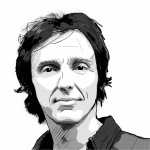In designating 2025 the International Year of Quantum Science and Technology, the UN is recognising the centenary of quantum mechanics. It was in 1925 that Werner Heisenberg first came up with a mathematical theory for describing the behaviour of atoms and fundamental particles, which had been found to obey different rules from the “classical” mechanics formulated by Isaac Newton and others.
Physicists such as Max Planck, Albert Einstein and Niels Bohr had shown that, at the atomic scale, change seems to happen not smoothly but in abrupt “quantum” jumps. Heisenberg’s quantum mechanics wasn’t just the first proper theory of what until then had seemed a perplexing jumble of ideas; it also signalled the first inkling of the counterintuitive strangeness of the quantum world, where objects seem sometimes to act like waves and sometimes like particles, and observers seem to have some say in what can be considered “real”.
The UN’s designation, however, strives to encompass not just the revolutionary shift in thinking about the physical world but also the technologies that have flowed from it. In a sense quantum technologies have been with us for close to a century, since the electronic properties of semiconductor materials like silicon can’t be fully understood without quantum mechanics. And lasers make use of a quantum effect first described by Einstein in 1917. But more recently many technologies have appeared that explicitly exploit “quantumness” to achieve things that couldn’t even be imagined from classical physics.
The most media-friendly of these devices are quantum computers, in which information is stored and manipulated not in the conventional “bits” of classical computers, which have two settings representing binary 1s and 0s, but in quantum bits each of which can be set to any conceivable mixture of 1 and 0. The same quantum rules for encoding information are used in quantum cryptography, which harnesses the peculiar quantum property called entanglement to send information (for example as light pulses along optical fibres) in a form that cannot possibly be intercepted and read without the tampering being detectable.
These “quantum information technologies” seemed futuristic 20 years ago but are now being used commercially, and the IT giant Honeywell has forecast that they will be a $1tn industry within three decades. But they are just the tip of the iceberg. The UK launched its National Quantum Technologies Programme in 2014, initially promising £1bn of funding over 10 years and now entering its third phase with emphasis on scaling up from lab prototypes to industrial production. Needless to say, this investment might pale next to that in the US and China, let alone that from private companies, but the UK has long fostered the wish to be a leader in the field.
Quantum physics can offer ways of making sensor devices much more sensitive than could be achieved otherwise. For example, because quantum particles can be made to behave like waves, they can show interference effects as light waves do – that’s the phenomenon that produces the rainbow of colours on the surface of CDs. Interference can be extremely sensitive to small disturbances, which is how quantum detectors of acceleration or of gravitational fields are made from “matter waves” of very cold atoms. Precise measurements of acceleration are needed for navigation systems such as GPS, while quantum gravity sensors could be useful for geological research and prospecting, as well as for detecting gravitational waves for astronomy.
Such quantum matter waves are also used to make the most precise atomic clocks currently known – devices that, in effect, tick with unerring steadiness and which are also needed for GPS systems, secure telecommunications, and elsewhere. Like conventional clocks, these quantum devices count out time according to some regular oscillation – a sort of “swinging pendulum” – but their oscillators are the quantum vibrations of electrons in single atoms, which are identical for all atoms of a given type. Today’s best atomic clocks wouldn’t have deviated by more than a second if they had been switched on at the start of the universe 13.8 billion years ago.
The best current sensors of magnetic fields also make use of quantum physics to attain a sensitivity that enables them, for example, to detect the fields generated by individual atoms. There are applications of such high-precision instruments in biomedicine, for example to record brain activity in the technique called magnetoencephalography.
None of the early quantum pioneers imagined for a moment their recondite discoveries being put to use in this way. But that’s how it so often is with breakthroughs in fundamental science.




